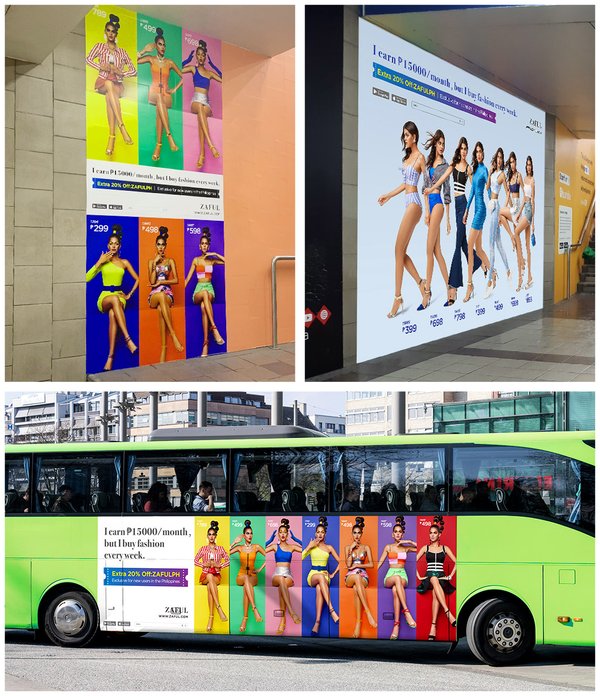Increase Your Organization with Transit Advertising Philippines
Increase Your Organization with Transit Advertising Philippines
Blog Article
Understanding the Function of Transportation Marketing in Enhancing Brand Name Presence and Customer Engagement
Transportation advertising and marketing has emerged as a pivotal aspect in the advertising and marketing landscape, offering special opportunities for brands to boost their visibility and engage consumers successfully. With the capacity to reach a diverse and captive target market throughout their day-to-day commutes, these marketing approaches are not simply regarding exposure; they are concerning creating meaningful links with prospective consumers. As we discover the multifaceted advantages and cutting-edge approaches within transit marketing, it comes to be crucial to consider how these elements collectively affect consumer understanding and habits, increasing inquiries concerning their lasting influence on brand name commitment.
Meaning of Transportation Marketing
Transportation marketing refers to the practice of advertising items, services, or brand names with ads put around public transport systems. This type of advertising encompasses a selection of placements, including posters on trains and buses, electronic screens at transit stations, and covers on the outside of automobiles. It aims to get to a diverse audience, taking advantage of the high foot website traffic connected with public transit.
Transportation marketing is strategically positioned to capture the focus of commuters, who usually spend considerable time traveling or waiting. By incorporating ads right into the everyday routines of people, brand names can produce a lasting impact and foster brand acknowledgment. The medium is especially reliable in metropolitan settings, where public transport is a main setting of travel.
In addition, transit advertising and marketing can assist in localized targeting, allowing businesses to get to certain demographics based upon transportation routes and station places. As urban populations expand and using public transport rises, this advertising approach has actually gotten prestige as a vital element of incorporated marketing approaches. The dynamic nature of transit advertising and marketing, incorporated with its ability to engage customers in a restricted setting, underscores its importance in contemporary advertising and marketing techniques.
Benefits of Transit Advertising
The efficiency of transportation advertising and marketing hinges on its ability to provide a wide range of benefits to brand names looking for to improve presence and interaction. Among the key benefits is the considerable reach it offers; transit advertisements can effectively target varied demographics throughout city areas, reaching both commuters and pedestrians alike. This broad exposure substantially improves brand understanding.
Another advantage is the high regularity of impacts. As transit lorries travel along well established routes and stop at several locations, they produce repeated exposure that reinforces brand name messages. This frequency cultivates knowledge, which is crucial in customer decision-making.
Transit advertising is additionally cost-efficient contrasted to other media platforms. Offered its large reach and capacity for high perceptions, brands usually experience a reduced expense per thousand impressions (CPM), optimizing their marketing budget plan.
Moreover, transportation ads can create a feeling of area link. By lining up with local transportation systems, brand names can reverberate with local audiences and foster a sense of neighborhood satisfaction. This local approach boosts brand name loyalty and involvement, making transportation marketing a compelling choice for organizations intending to solidify their presence in the market.

Effective Strategies for Transportation Campaigns
To maximize the influence of transit campaigns, brand names ought to take advantage of critical planning and implementation tailored to their target market. First, determining the group features of the target market using public transportation is crucial. This enables brand names to develop tailored messaging that resonates with prospective consumers.
Next, selecting the ideal transportation mediums is vital. Whether making use of bus wraps, train posters, or electronic displays, each medium has distinct benefits that can boost visibility. For instance, lively visuals on bus covers can attract interest, while electronic advertisements can be upgraded frequently to mirror prompt promotions.
Furthermore, incorporating a cohesive branding method throughout transportation systems guarantees consistency and enhances the brand name's identification. Making use of attractive styles and unforgettable taglines will certainly enhance brand name recall amongst travelers.
By employing these approaches, brands can properly harness the possibility of transit advertising, cultivating better awareness and link with their target audience. Eventually, a well-executed transit project can drive considerable growth in brand name exposure and customer interaction.

Gauging Effect and Engagement
In evaluating the performance of transit ad campaign, accurate dimension of impact and involvement is necessary for brands looking for to optimize their advertising and marketing methods. Metrics such as reach, regularity, and perceptions provide fundamental data to examine visibility. Examining these aspects helps figure out the amount of potential consumers are exposed to the ads throughout their everyday commutes.
Involvement can be further assessed through consumer communications, such as website traffic, social media sites discusses, and straight feedbacks to calls-to-action featured in the ads. Using devices like QR codes or distinct Links can promote tracking of consumer habits straight linked to transit projects. Surveys and feedback mechanisms additionally act as important techniques to collect qualitative information on consumer perceptions and recall of the ad.
In addition, advanced analytics and attribution designs can correlate transportation direct exposure with succeeding buying habits, using understandings right into the roi. By employing a thorough approach that combines quantitative and qualitative steps, brands can establish a nuanced understanding of their transit marketing effect. Eventually, this data-driven method makes it possible for brand names to improve their projects, guaranteeing they reverberate successfully with target market and improve general brand exposure.
Study of Successful Campaigns
Successful transportation ad campaign function as engaging instances of just how efficient strategies can boost brand name exposure and interaction. Transit Advertising Philippines. One useful source noteworthy case is the "I Love New York" campaign, which changed the city's picture and drew in millions of directory tourists. By using train advertisements, signboards, and bus wraps, the campaign developed a solid, cohesive brand name identification, causing a substantial uptick in tourism and local organization patronage
One more exemplary project is Coca-Cola's "Share a Coke" effort, which leveraged transit advertising to individualize the brand experience. By featuring preferred names on advertising products across numerous transit platforms, Coca-Cola cultivated a deeper psychological link with customers, urging them to share their experiences on social media sites.
In addition, the "Got Milk?" project properly made use of mass transit advertisements to get to a broad target market, strengthening the message of the value of milk in a well balanced diet regimen. The project saw a measurable rise in milk intake in target demographics.
These case studies highlight that when carried out thoughtfully, transit advertising can dramatically boost brand name presence, foster customer interaction, and drive measurable outcomes, demonstrating its crucial function in modern advertising and marketing approaches. - Transit Advertising Philippines
Conclusion
In verdict, transportation advertising serves as an important tool for improving brand name exposure and promoting customer interaction. Inevitably, the capacity to gauge involvement and analyze effective instance researches emphasizes the performance of transportation advertising and marketing in driving brand name loyalty and consumer interactions.
Transit advertising has emerged as a pivotal component in the advertising landscape, using one-of-a-kind possibilities for brands to raise their presence and engage consumers efficiently.Furthermore, transit advertising can facilitate localized targeting, permitting organizations to get to details demographics based on transportation courses and terminal locations.In assessing the effectiveness of transportation advertising and marketing projects, accurate measurement of impact and engagement is necessary for brand names looking for to maximize their advertising techniques.Successful transportation Source marketing campaigns offer as compelling examples of just how efficient techniques can elevate brand name exposure and involvement.In verdict, transit advertising and marketing offers as a crucial tool for boosting brand name exposure and cultivating consumer interaction.
Report this page